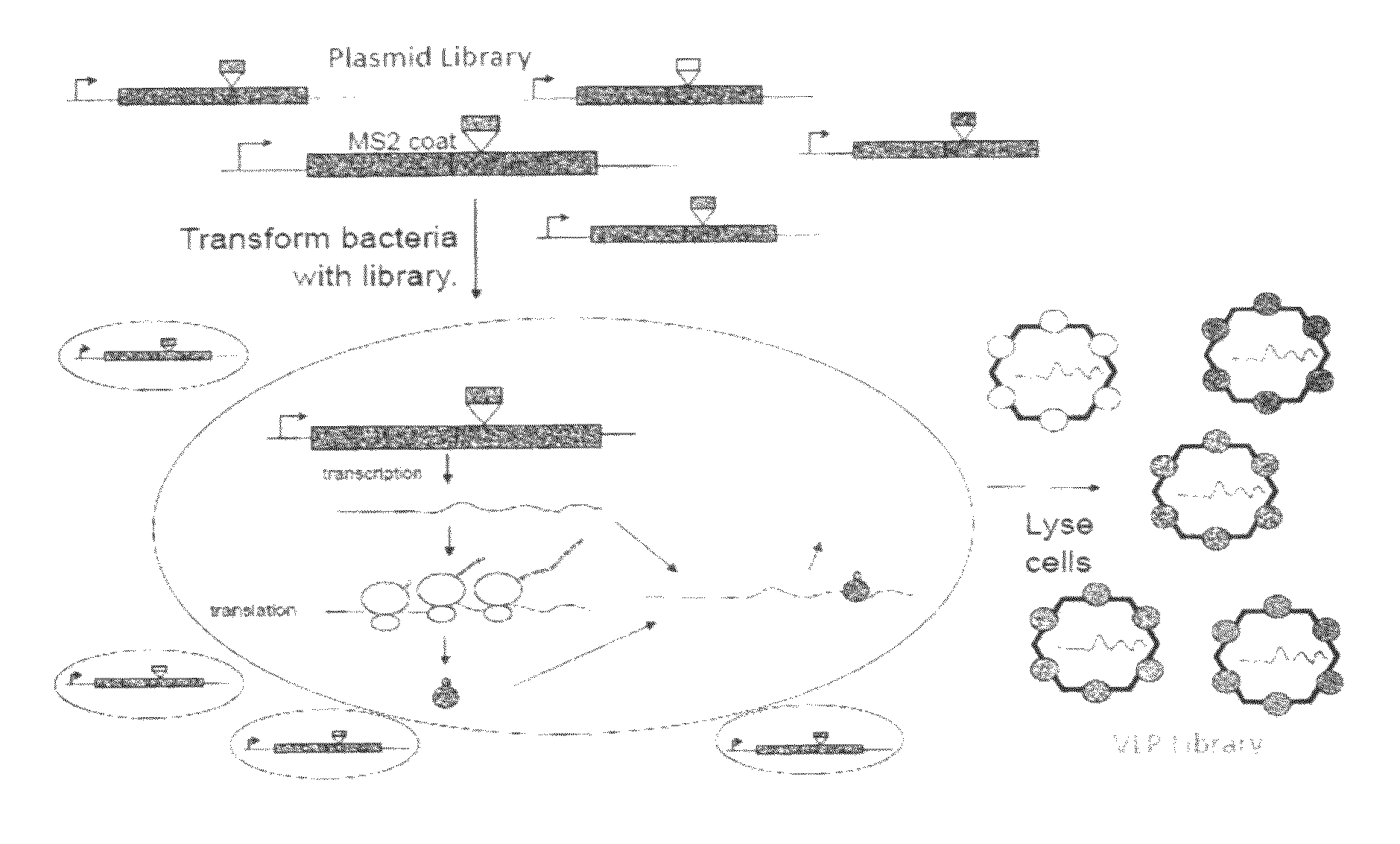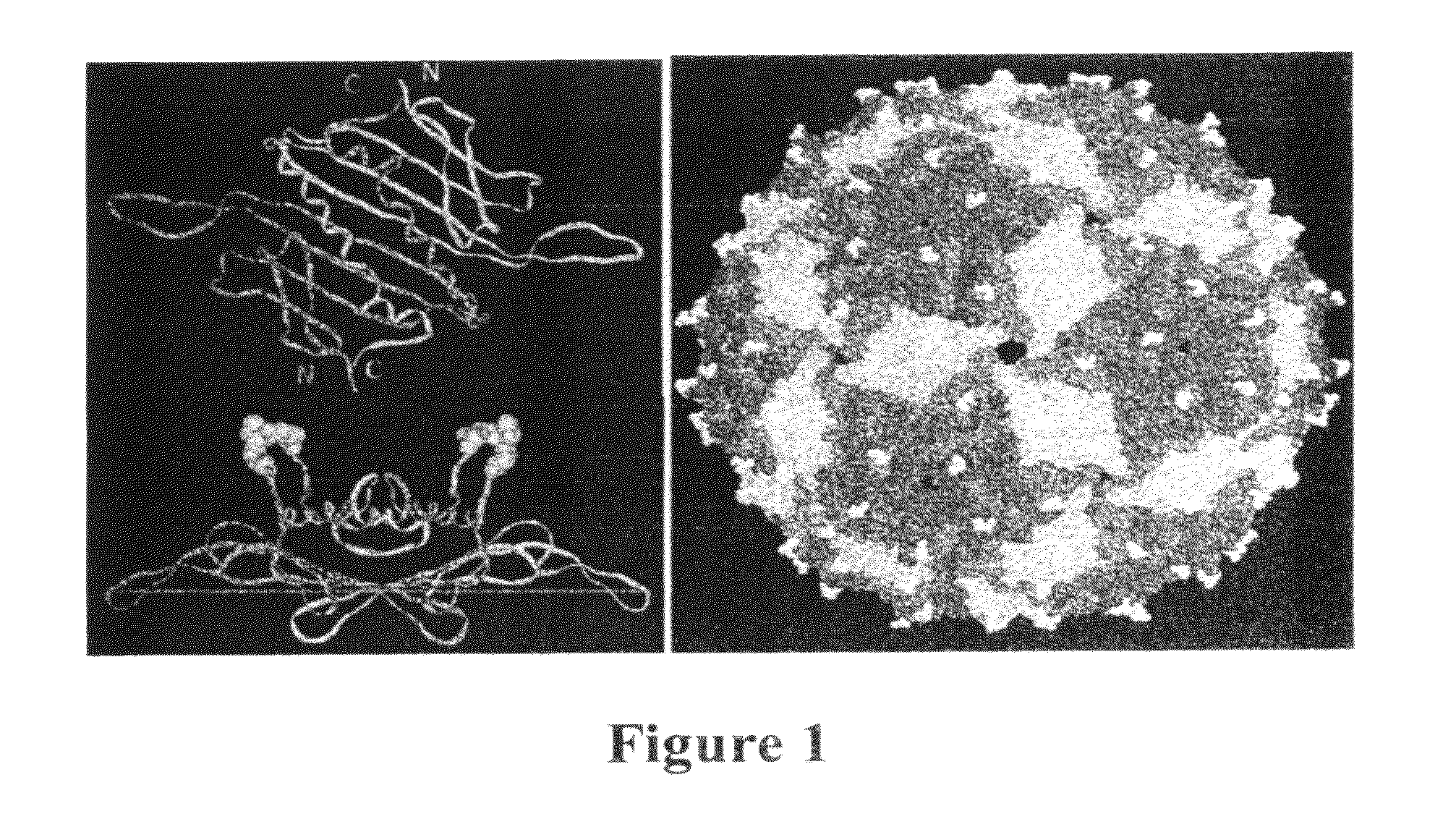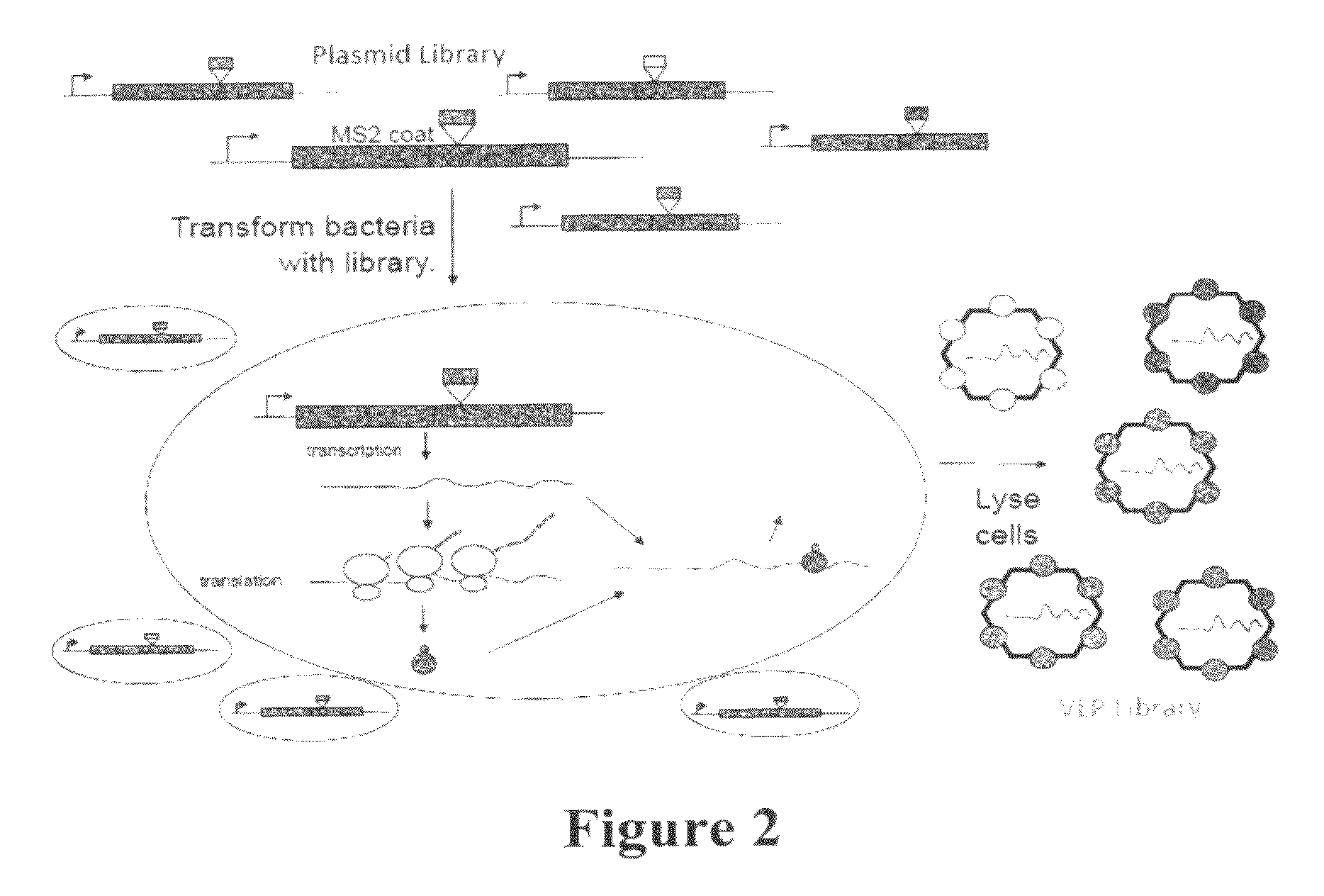Plasmids and methods for peptide display and affinity-selection on virus-like particles of RNA bacteriophages
a technology of virus-like particles and plasmids, which is applied in the field of system and method for display of peptides on virus-like particles, can solve the problem of hard to select preferentially, and achieve the effects of reducing side effects, high immunogenicity, and facilitating the construction of random sequence or antigen fragment peptide libraries
- Summary
- Abstract
- Description
- Claims
- Application Information
AI Technical Summary
Benefits of technology
Problems solved by technology
Method used
Image
Examples
example 1
pDSP1
A Plasmid Expressing a Single-Chain Dimer with Convenient Cloning Sites for Insertion in the AB-Loop
[0216]The plasmid pDSP1 (see FIGS. 5a and 7a) contains the T7 transcription signals of pET3d and the kanamycin resistance and replication origin of pET9d. (Information regarding pET3d and pET9d may be found at the New England Biolabs vector database, available on the world wide web at lablife.org / ct?f=v&a=listvecinfo). It expresses the coding sequence of the MS2 single-chain coat protein dimer (6), modified to contain unique Sali and Kpni restriction sites. This facilitates simple cloning of foreign sequences into the AB-loop. To make these sites unique, it was necessary to destroy other SalI and KpnI sites in the vector and in the upstream coat sequence.
[0217]The MS2 coat sequence in the vicinity of the AB-loop insertion site for pDSP1 is shown below—SEQ ID NO:16 for the amino acid sequence and—SEQ ID NO:17 for the nucleotide sequence. Note the presence of SalI and KpnI sites.
[0...
example 2
pDSP62
A Plasmid Suitable for Library Construction Using Efficient Site-Directed Mutagenesis Methods
Introduction of an M13 Origin of Replication.
[0225]Methods for library production like that described above for pDSP1, are difficult to scale up, because it is inconvenient to purify DNA restriction fragments in the necessary quantities. Moreover, during ligation reactions some of the DNA is inevitably diverted into useless side-products, reducing the yield of the desired plasmid. The construction of complex libraries would be facilitated by methods that efficiently produce larger yields of the correct recombinant DNA than are found in a typical ligation reaction. Specifically, a variation of an old method for site-directed mutagenesis is preferred to be used, which was already by others to produce peptide libraries on filamentous phage in the 10″ complexity range (2, 6). The method is applied to single-stranded circular DNAs produced from a particular kind of plasmid (also know as a p...
example 3
Design of a PP7 Peptide Display Vector
[0234]Two general kinds of plasmid were constructed for the synthesis of PP7 coat protein in E coli (see FIGS. 9 and 13). The first expresses coat protein from the lac promoter and is used (in combination with pRZP7—see below) to assay for coat protein's tolerance of peptide insertions using translational repressor and VLP assembly assays. The second plasmid type expresses the protein from the T7 promoter and transcription terminator. These plasmids produce large amounts of coat protein that assembles correctly into a VLP. They also produce coat-specific mRNA with discrete 5′- and 3′-termini for encapsidation into VLPs.
Design of the Peptide Insertion Site.
[0235]The three-dimensional structure of the PP7 capsid shows that it is comprised of a coat protein whose tertiary structure closely mimics that of MS2, even though the amino acid sequences of the two proteins show only about 12% sequence identity (10)[17]. The PP7 protein possesses an AB-loop...
PUM
| Property | Measurement | Unit |
|---|---|---|
| dissociation constant | aaaaa | aaaaa |
| diameter | aaaaa | aaaaa |
| internal diameter | aaaaa | aaaaa |
Abstract
Description
Claims
Application Information
 Login to view more
Login to view more - R&D Engineer
- R&D Manager
- IP Professional
- Industry Leading Data Capabilities
- Powerful AI technology
- Patent DNA Extraction
Browse by: Latest US Patents, China's latest patents, Technical Efficacy Thesaurus, Application Domain, Technology Topic.
© 2024 PatSnap. All rights reserved.Legal|Privacy policy|Modern Slavery Act Transparency Statement|Sitemap



